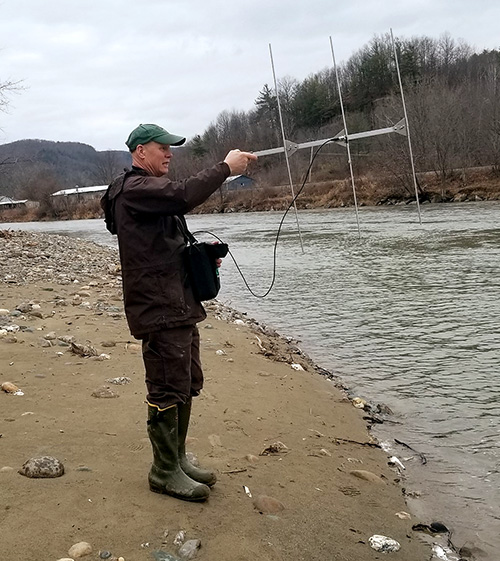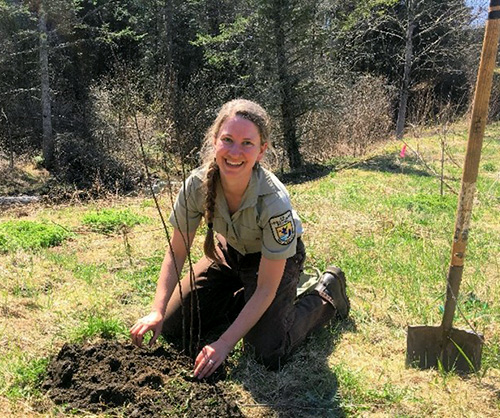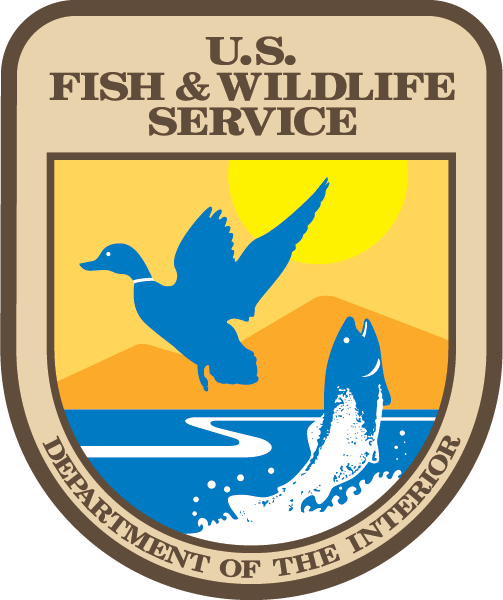
U.S. Fish and Wildlife Service
Mission
The U.S. Fish and Wildlife Service (USFWS) mission is to work with others to conserve, protect, and enhance fish, wildlife and plants and their habitats for the continuing benefit of the American people. In the Lake Champlain Basin, the Lake Champlain Fish and Wildlife Conservation Office, Dwight D. Eisenhower and White River National Fish Hatcheries and the Missisquoi National Wildlife Refuge work with partners to protect, restore and manage fish and wildlife and their habitats.
Agency Initiatives
Restoring Native Fish in Lake Champlain
Multiple USFWS programs collaborate with states and other partners to restore native fish populations and fisheries to the Lake Champlain Basin including the first documented natural reproduction of landlocked Atlantic salmon in over 150 years in the Winooski and Boquet Rivers. Research and assessment guides efforts by National Fish Hatcheries to produce and stock salmon that thrive and reproduce. Removing dams, ensuring fish passage at others and upgrading bridges and culverts under roads allows fish to migrate up and downstream. Control of parasitic sea lamprey allows for increased survival and natural reproduction of salmon, lake trout, lake sturgeon and other species.
Restoring Forested Riparian Buffers
The U.S. Fish & Wildlife Service works with voluntary private landowners to protect and restore fish and wildlife habitat in critical areas of Vermont. One of the ways that we accomplish these habitat goals is through the restoration of forested riparian buffers. Riparian buffers provide a multitude of habitat benefits to many species, including cold water fish such as brook trout and landlocked Atlantic salmon, migratory birds, and rare species such as the wood turtle. Mature riparian buffers also provide critical flood resiliency and water quality benefits by slowing down and absorbing flood waters and filtering out nutrients and sediment.
Managing Refuge Lands for all Wildlife
The Missisquoi National Wildlife Refuge includes a large mosaic of wetlands and uplands at the mouth the Missisquoi River that not only offers opportunities to see and manage more than 200 species of migratory birds including nesting bald eagles, osprey, great blue herons and as many as 25,000 migrating ducks but also provides habitat for many other fish, wildlife and plant species. The refuge is providing habitat for and documenting the role it plays in the conservation of native bees in Vermont. Pollinator species, including bees, are undergoing widespread declines in abundance and diversity in the state and across the country.
Current Projects
Tracking Salmon with Telemetry in the Winooski River

USFWS in collaboration with USGS is monitoring movement of adult landlocked Atlantic salmon in the Winooski River. Fish are tagged then released above the dams and tracked to identify critical habitats for spawning, fallback over dams, and overwintering behavior as part of restoration of natural reproducing salmon in the Winooski River.
Other Federal Agencies Involved: U.S. Geological Survey
Watch the Bringing Back Salmon video series to learn more about salmon restoration in the Lake Champlain Basin
Cooperative Delivery of Farm Bill Programs

USFWS works in partnership with USDA and local conservation organizations to deliver Farm Bill programs such as the Conservation Reserve Program and the Wetland Reserve Easement Program. Over the last 25 years, over 2,400 acres and 600 miles of streambank and 5,300 acres of wetlands have been restored.
Other Federal Agencies Involved: U.S. Department of Agriculture
Learn more about Lake Champlain Fish and Wildlife Conservation Office partnerships
